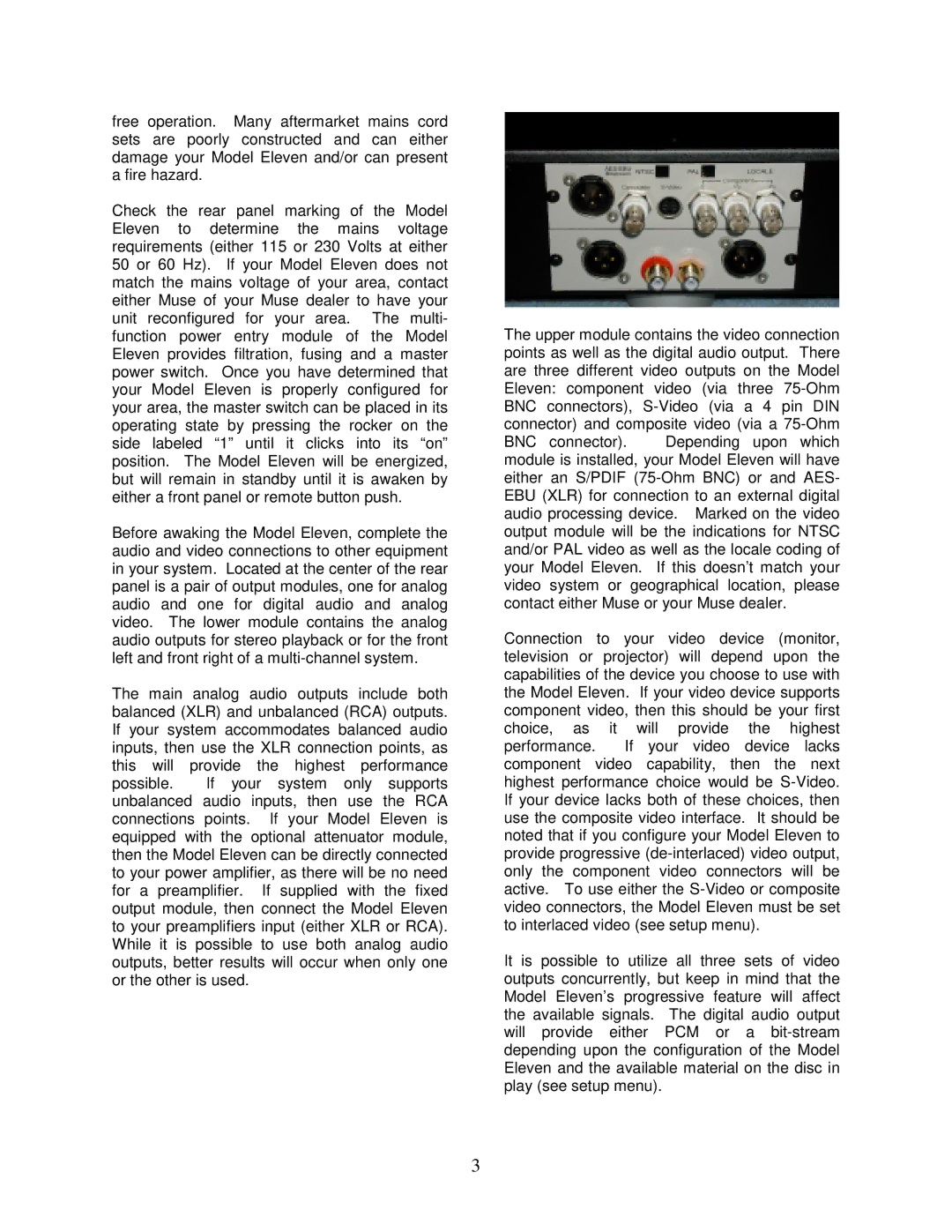
free operation. Many aftermarket mains cord sets are poorly constructed and can either damage your Model Eleven and/or can present a fire hazard.
Check the rear panel marking of the Model Eleven to determine the mains voltage requirements (either 115 or 230 Volts at either
50 or 60 Hz). If your Model Eleven does not match the mains voltage of your area, contact either Muse of your Muse dealer to have your unit reconfigured for your area. The multi- function power entry module of the Model Eleven provides filtration, fusing and a master power switch. Once you have determined that your Model Eleven is properly configured for your area, the master switch can be placed in its operating state by pressing the rocker on the side labeled “1” until it clicks into its “on” position. The Model Eleven will be energized, but will remain in standby until it is awaken by either a front panel or remote button push.
Before awaking the Model Eleven, complete the audio and video connections to other equipment in your system. Located at the center of the rear panel is a pair of output modules, one for analog audio and one for digital audio and analog video. The lower module contains the analog audio outputs for stereo playback or for the front left and front right of a
The main analog audio outputs include both balanced (XLR) and unbalanced (RCA) outputs. If your system accommodates balanced audio inputs, then use the XLR connection points, as this will provide the highest performance
possible. If your system only supports unbalanced audio inputs, then use the RCA connections points. If your Model Eleven is equipped with the optional attenuator module, then the Model Eleven can be directly connected to your power amplifier, as there will be no need for a preamplifier. If supplied with the fixed output module, then connect the Model Eleven to your preamplifiers input (either XLR or RCA). While it is possible to use both analog audio outputs, better results will occur when only one or the other is used.
The upper module contains the video connection points as well as the digital audio output. There are three different video outputs on the Model Eleven: component video (via three
BNC connector). Depending upon which module is installed, your Model Eleven will have either an S/PDIF
Connection to your video device (monitor, television or projector) will depend upon the capabilities of the device you choose to use with the Model Eleven. If your video device supports component video, then this should be your first choice, as it will provide the highest performance. If your video device lacks component video capability, then the next highest performance choice would be
It is possible to utilize all three sets of video outputs concurrently, but keep in mind that the Model Eleven’s progressive feature will affect the available signals. The digital audio output will provide either PCM or a
3
